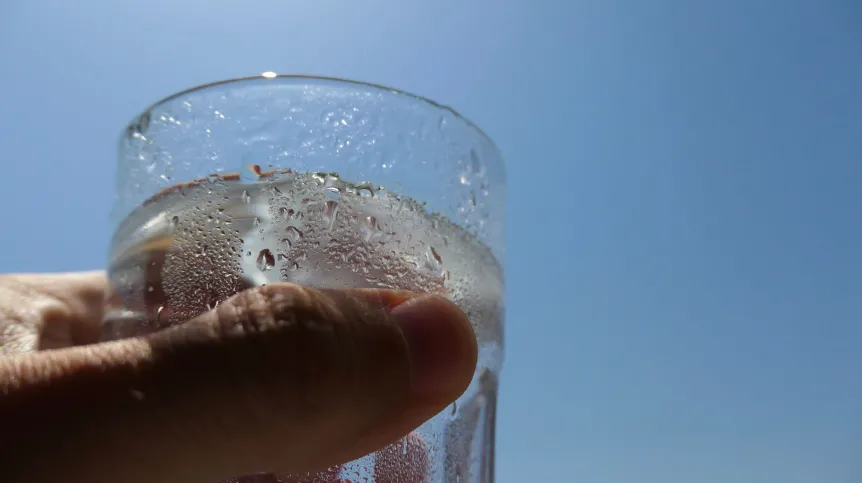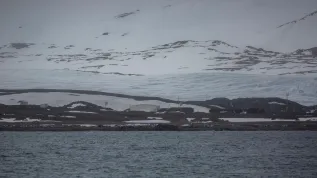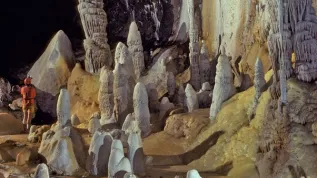
From several days to even hundreds and thousands of years - this is how long it takes for water precipitation that fell on the Earth's surface to reach the groundwater level, where over 70 percent of drinking water in Poland comes from, says hydrogeologist Małgorzata Woźnicka, PhD.
The time of this circulation depends on the geological structure, hydrogeological conditions of a given region, and above all, the depth of the aquifers. 'Where the groundwater table occurs shallowly, in highly permeable formations, such as gravel or cracked carbonate formations, the percolation time is shorter, sometimes it is even a matter of days. However, the deeper the groundwater table is and the greater the isolation of poorly permeable formations, the longer the percolation time is - it can reach months, years, or even hundreds of years', says Dr. Małgorzata Woźnicka from the Department of Groundwater Monitoring at the Polish Geological Institute – National Research Institute.
She adds that in the vicinity of Warsaw, groundwater, accumulated in sandy formations of the Vistula valley, usually occurs at a small depth of a few to a dozen or so meters. In such conditions, the percolation time of water infiltrating from the ground surface is short.
'However, looking at the age of water on a planetary scale, all the water accumulated on Earth is several billion years old. The most common theory regarding the genesis of water on Earth is that it appeared during the so-called Great Bombardment, between 4.2 billion and 3.8 billion years ago. At that time, icy comets and asteroids collided with Earth and filled the atmosphere with water vapour, which then condensed and, in simple terms, the hydrosphere was created. Since then, the amount of water on Earth has been constant - it neither increases nor decreases. However, the form of water occurrence on Earth and its spatial distribution have been changing," she says.
She points out that this must not be confused with the availability of water, because that varies depending on the given place or moment.
The expert reminds that 97 percent of the entire water resource on Earth is accumulated in oceans and seas - however, this is salty, undrinkable water.
The remaining 3 percent is freshwater. 'Of these, over 68% of water is stored in glaciers and ice sheets. Groundwater accounts for a little over 30% and plays a very important role in the entire hydrological cycle as its most stable element. It is the basis for supplying people with drinking water. In Poland, over 70% of drinking water that reaches water supply networks comes from groundwater', says Małgorzata Woźnicka.
Groundwater can be located at various depths. 'Sometimes it is almost under our feet, at a depth of less than one metre. But it also occurs deeper, at several hundred or even over a thousand metres. The usable layer, most often exploited by groundwater intakes, is the zone from a few to several dozen metres. These are the so-called main usable aquifers', she explains.
The deeper the water is, the better it is protected against contamination from the ground surface, and the more it is resistant to periodic rainfall deficits.
Groundwater is not as vulnerable to periods of drought as surface water, where the effects are visible immediately. However, this does not mean that the groundwater level does not decrease during such periods. 'Currently, part of the country is in a state of hydrogeological hazard, related to the occurrence of the phenomenon of hydrogeological low water, i.e. a state when the groundwater level is below low warning levels. At this time of year, this is unusual and worrying', says Małgorzata Woźnicka.
'Poland has mostly a generally favourable geological structure, with good conditions for groundwater alimentation. Considering the current use of groundwater and available resources, we have large groundwater reserves on a national scale. We expect that these documented resources are available at 34 million cubic meters per day - and we use about 20 percent of them. Of course, this information concerns the entire country, which is diverse, so there are places where hydrogeological conditions are less favourable and there may even be deficits. This applies in particular to areas with intensive, cumulative groundwater collection', she explains.
She says that in addition to the amount of groundwater, its quality is also important. 'As the state geological service, we constantly monitor and assess the condition of groundwater. On a national scale, the condition of groundwater is good in 95 percent of the area, but there are locally contaminated areas', Małgorzata Woźnicka reports.
Groundwater contamination has its sources on the surface of the earth. These are mainly contaminants from: agricultural activity (nitrates, pesticides), unorganised sewage management (e.g. leaky cesspools) and industrial plants - even those that no longer exist.
'For example, the flow of groundwater in sands is quite slow, about 100 metres per year. That is why pollution often appears in water intakes only after a dozen or even several dozen years. When looking for the source, it turns out that it is improperly conducted waste or sewage management by some no longer existing industrial plant, as a result of which pollutants got into the ground and then into groundwater. Purifying water and making it suitable for consumption again is very difficult, expensive and time-consuming', the expert says.
When asked about the challenges related to groundwater management, she names two main ones. 'In terms of quantity, this is unregistered water collection. Significant amounts of water are often used outside the regulations resulting from the Water Law, so we do not know how much water such a +grey zone+ collects. And we need these data to maintain a balance and determine resource reserves', she says.
In terms of water quality, Małgorzata Woźnicka points to building social awareness and education to properly manage waste and sewage, so as not to contaminate groundwater. 'During field work, we have often seen a well that was later converted into a cesspool. This is unacceptable. Groundwater is our strategic reserve, this is where we draw drinking water from, so we really have to take care of it', the expert concludes.
PAP - Science in Poland, Agnieszka Kliks-Pudlik (PAP)
akp/ zan/













